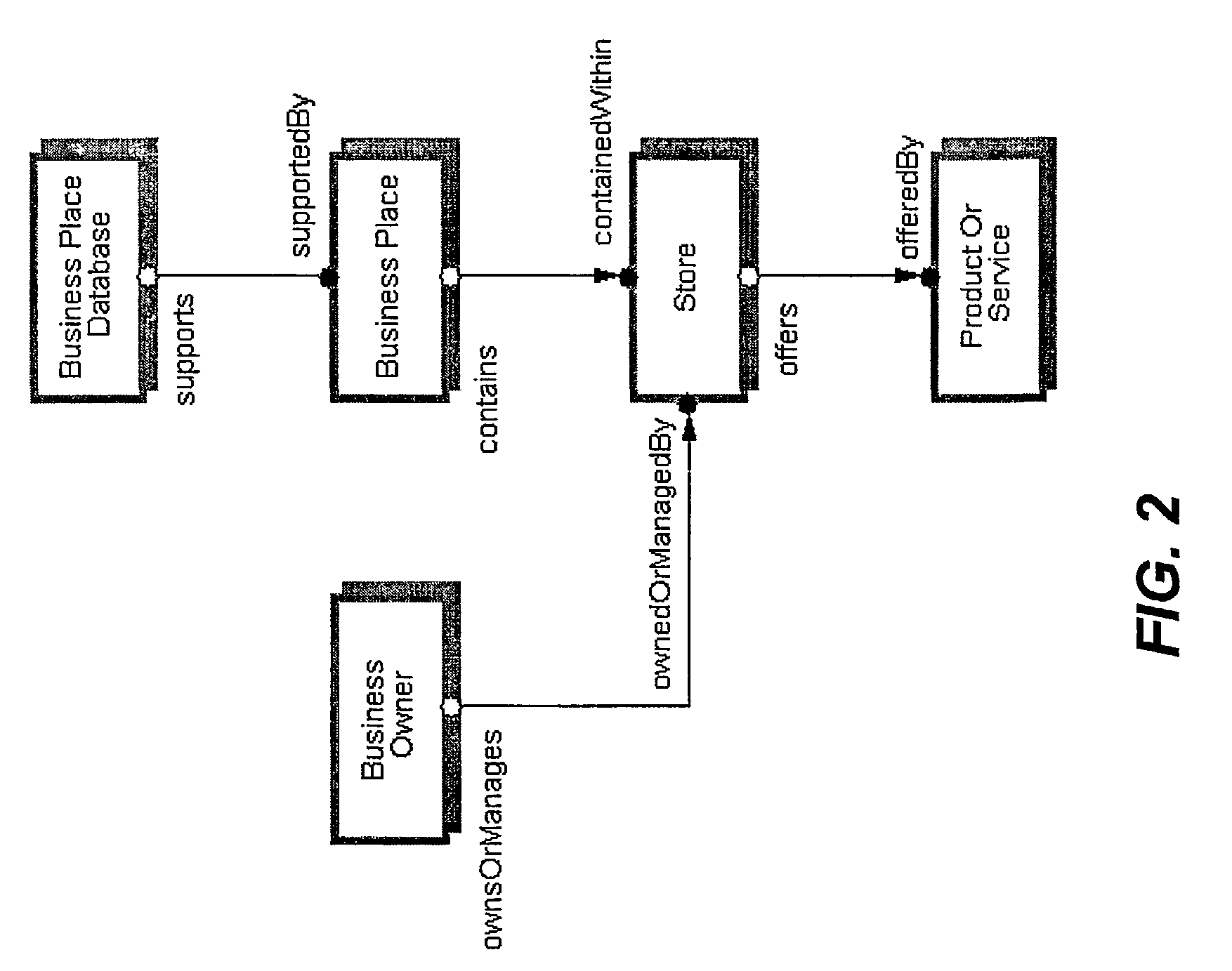Collaborative linking system with bi-directed variable granularity search engine
a collaborative linking and variable granularity technology, applied in the field of networked computer systems, can solve the problems of limitless ability, reach and access of web users, limited delivery, etc., and achieve the effect of facilitating consumer interaction and consumer search
- Summary
- Abstract
- Description
- Claims
- Application Information
AI Technical Summary
Benefits of technology
Problems solved by technology
Method used
Image
Examples
Embodiment Construction
[0026]In the preferred form, the collaborative linking system is applied in a Web-based e-commerce context. In such a context, a first class of users includes “providers”, having members that include a plurality of retailers, service providers, restaurants, and so on. For the most part, in the preferred embodiment, a provider may be any type of entity found in a typical Yellow Pages phone book, for example. A second class of users includes “consumers”, having members that include individuals, businesses, and so on. Preferably, providers and consumers interact with the collaborative linking system via any of a variety of wired or wireless types of computers (e.g., workstations, personal computers (PCs), cellular telephones, pagers, electronic personal organizers, Web enabled televisions, or other types of electronic devices).
[0027]Members of each class (i.e., providers and consumers) may be grouped into subclasses based on additional criteria. Sub classifying may be either independen...
PUM
 Login to View More
Login to View More Abstract
Description
Claims
Application Information
 Login to View More
Login to View More - R&D
- Intellectual Property
- Life Sciences
- Materials
- Tech Scout
- Unparalleled Data Quality
- Higher Quality Content
- 60% Fewer Hallucinations
Browse by: Latest US Patents, China's latest patents, Technical Efficacy Thesaurus, Application Domain, Technology Topic, Popular Technical Reports.
© 2025 PatSnap. All rights reserved.Legal|Privacy policy|Modern Slavery Act Transparency Statement|Sitemap|About US| Contact US: help@patsnap.com



